Maen Hammad will be the first to tell you he is not ‘officially’ a photographer — he has a master’s in international law, and works as a human rights researcher and campaigner. But photography has always been enmeshed with his passion for skating: he’s been dutifully documenting his skater friends since he was a preteen. When he returned to his native Palestine after many years in America, skateboarding transcended passion and became a conduit to broader storytelling, a way to reckon with contemporary topography, identity, diaspora and homeland. He chronicled the scene himself, but also distributed disposable cameras to skater friends for an inclusive and encompassing sense of this niche scene.
Subscribe to i-D NEWSFLASH. A weekly newsletter delivered to your inbox on Fridays.
Maen’s work was recently on view in the group show An Expression of Absence at Bronx Documentary Center. The show was produced via the Magnum Foundation and the Arab Documentary Photography Program (ADPP), the latter of which was founded in 2014 in the wake of the Arab Spring, providing support and mentorship to photographers from across the Middle East and North Africa. Beyond the show, he’s working on synthesising his project, Landing, into a book or ‘zine, gathering images and testimonies to form a more panoramic view on what it means to be a young Palestinian in impossible-feeling circumstances.
We spoke with Maen about day-to-day representation in controversial territories, re-appropriating public urban space, and why he can’t walk past a set of stairs without assessing their skating potential.
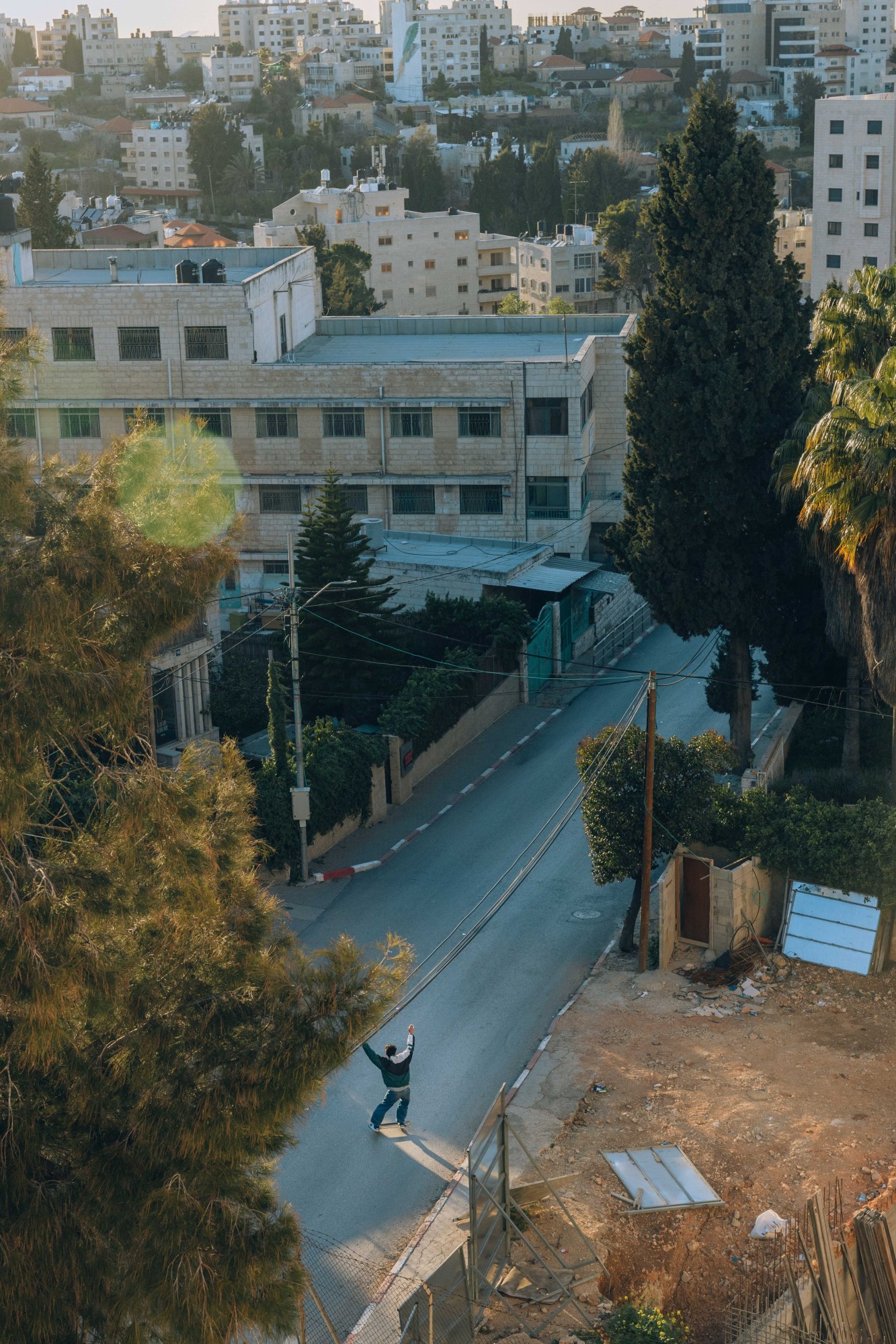
How do your trajectories as a photographer and as a skater overlap?
I have been a skater for most of my life — I started skating when I was, like, nine years old. I was born in Palestine, but I moved to Michigan when I was two. Most of my youth was very much in and around American suburbia. In 2014, after a long time being away and in the diaspora, I decided to go back to Palestine to take an Arabic course. As any skater would do, I brought my skateboard with me and sort of stumbled into a group of young Palestinian skaters. So that started a shift into picking up a camera and documenting this scene, just for my own sake.
In 2020, I had a really great mentor and friend who pushed me to do something with this work. So I switched gears into making it a collaborative photo-documentary project with a handful of the skaters that I had been homies with for a while. Having grown up in the US, and albeit having spent about seven years in Palestine, I still felt it was a really awkward narrative perspective to speak on behalf of Palestinian skating. So I really wanted to collaborate with the skaters to give them agency: I don’t want to just shove a camera in their face and be like, this represents you. Another part of the collaboration was interviews and conversations and journal entries on how and where these photos can tell their story. A lot of that is more fleshed out in the bigger body of work, which is a photo book. I hope that agency will come out.
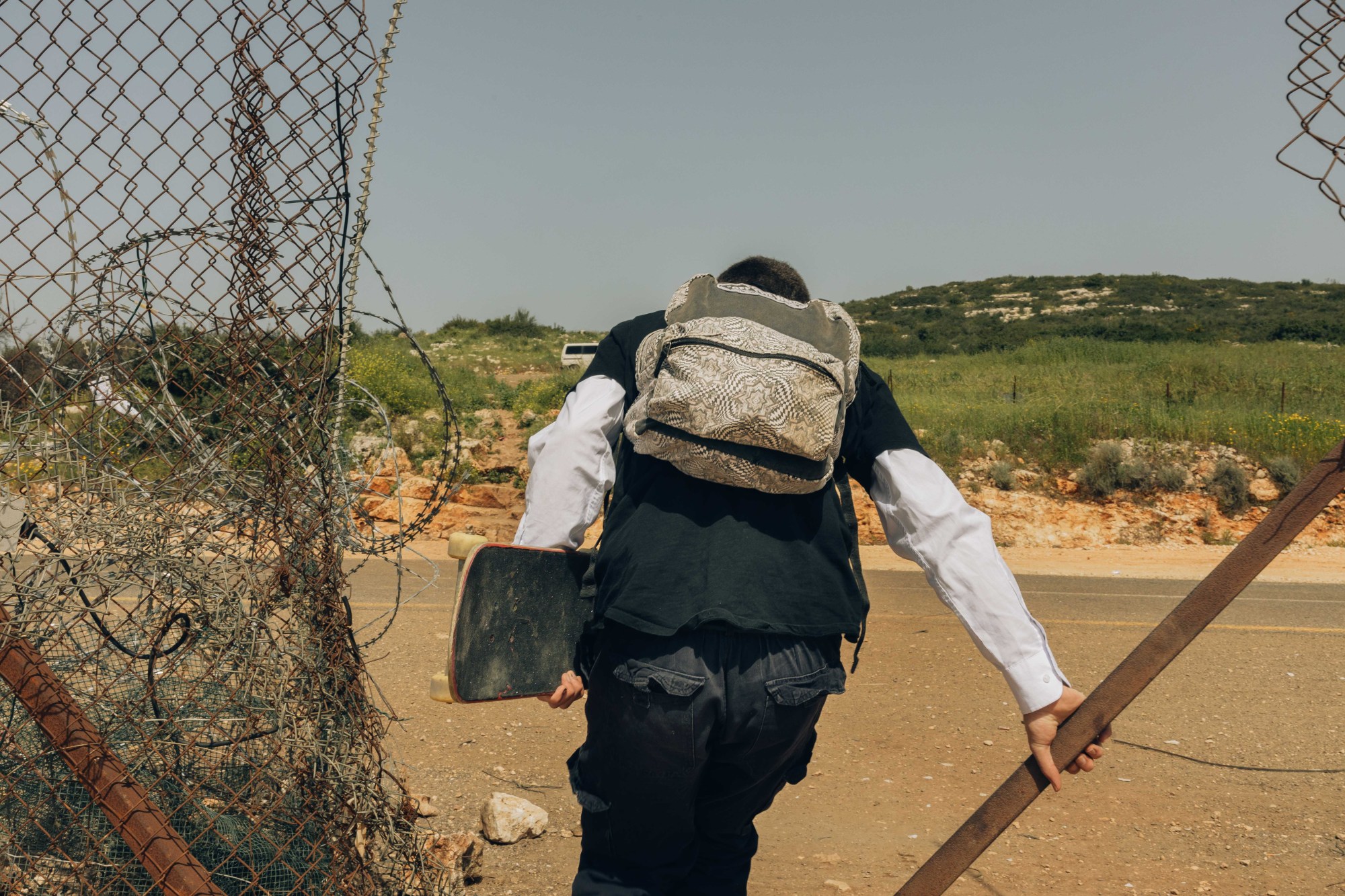
The book is forthcoming?
It’s called Landing. It’s a hybrid photo book/skate zine. We’re still designing it, but it’s pages of text and journals and loads of photos, including images and quotes from five skaters.
How have the other skaters’ photographs been a good complement to yours? What surprised you, in terms of what was captured by others?
I thought, should I create a theme that they could cover? I just realised: actually I don’t need to tell them to do anything. They’re all really creative and artsy people in their own right. The prompt I gave was just to photograph the world around them. I was surprised — I shouldn’t be — but the project, in my eyes, was trying to tap into skating and space and violence and escape. Their photos were also just photos of things a teenager would do on an empty street while they’re on their skateboard, taking selfies with their friends.

Does age or youthfulness have an effect in terms of what is being emphasised?
That is something that I was trying to point out: a lot of this work is to highlight that young Palestinians are also just young people. And young people have lives and stories that often will never make any headlines. The storyline in and around young people in Palestine is often inundated with a lot of myths and imagery that I think is non-representative of the real day-to-day life that young people are living.
Yes — people have come to expect depictions of sensationalism over depictions of the quotidian, in a really problematic way. Could you elaborate on how you arrive at depicting something that both honors the reality, but also maybe renews someone’s gaze, in terms of how they consider this territory?
Throughout the time that I was really focusing on this work, in and around May of 2021, there was a huge upsurge in violence against Palestinians. There was the Unity Uprising: a lot of really important on-the-ground things were happening. How I saw skating at that time was also a really important part of this story. I had spent so much time thinking of skating as this escape, and the importance of needing an escape. Around May 2021, none of us were skating. There were all these protests and demonstrations and uprisings in East Jerusalem and Gaza — the whole of Palestine was sort of on fire at the same time. That was an important moment, for your question, to orient how I framed this: it was through conversations with them where I realized skating is so important. The world we live in is unforgiving, and one that is quite painful: no one act or sport can override that.
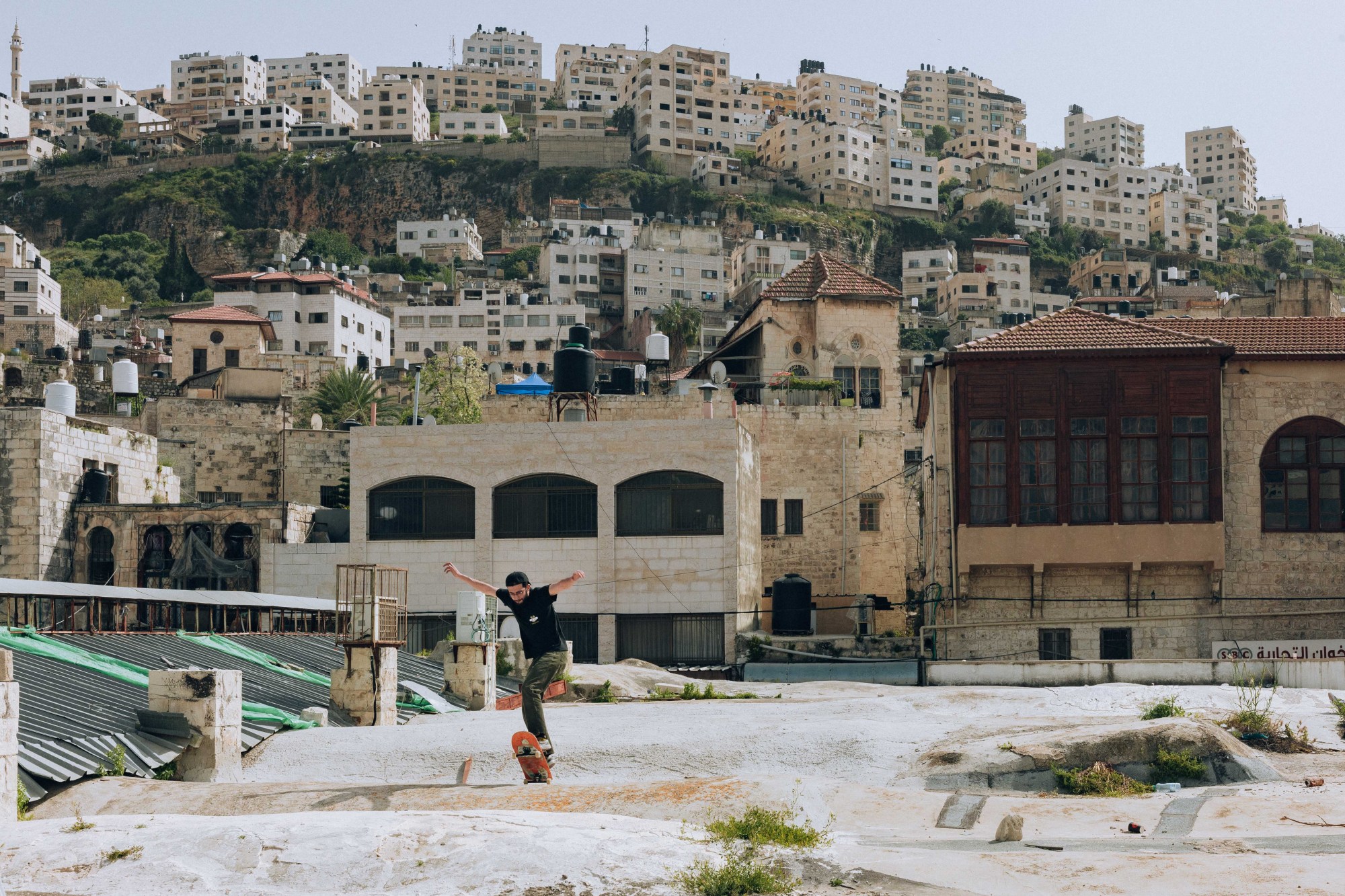
In the exhibition text, you write: “one can participate with space.” And you also describe skating as “an interpretive dance with the built environment.” That is beautiful! And really interesting: skating as participation, as mingling with topography.
In any big US city, you always see street skaters engaging with private and public property in a way that probably is really confusing. For skaters, there really is a sort of lens through which they see the world. You would see something in a plaza as like, “oh, that’s a cool monument or statue”. A skater would look at that and think, “I guarantee I could have enough run up to push and go up that and to then ollie and do a flip trick over it, and have someone photograph me and share it with the skate community, so they know that piece of property has been conquered”. I think space — architecture — can be so violent. And skaters spend so much time in the street, engaging with space, that I really think this interpretive dance is one that is reclaiming that agency.
In Palestine, street skating is inherently a radical endeavor. Because space and land in Palestine is always entrenched by rights abuses, whether it’s land theft or night raids or, in the case of Gaza, airstrikes… in the case of the West Bank, checkpoints. Street skating allows you to be involved in space, by you and for you.
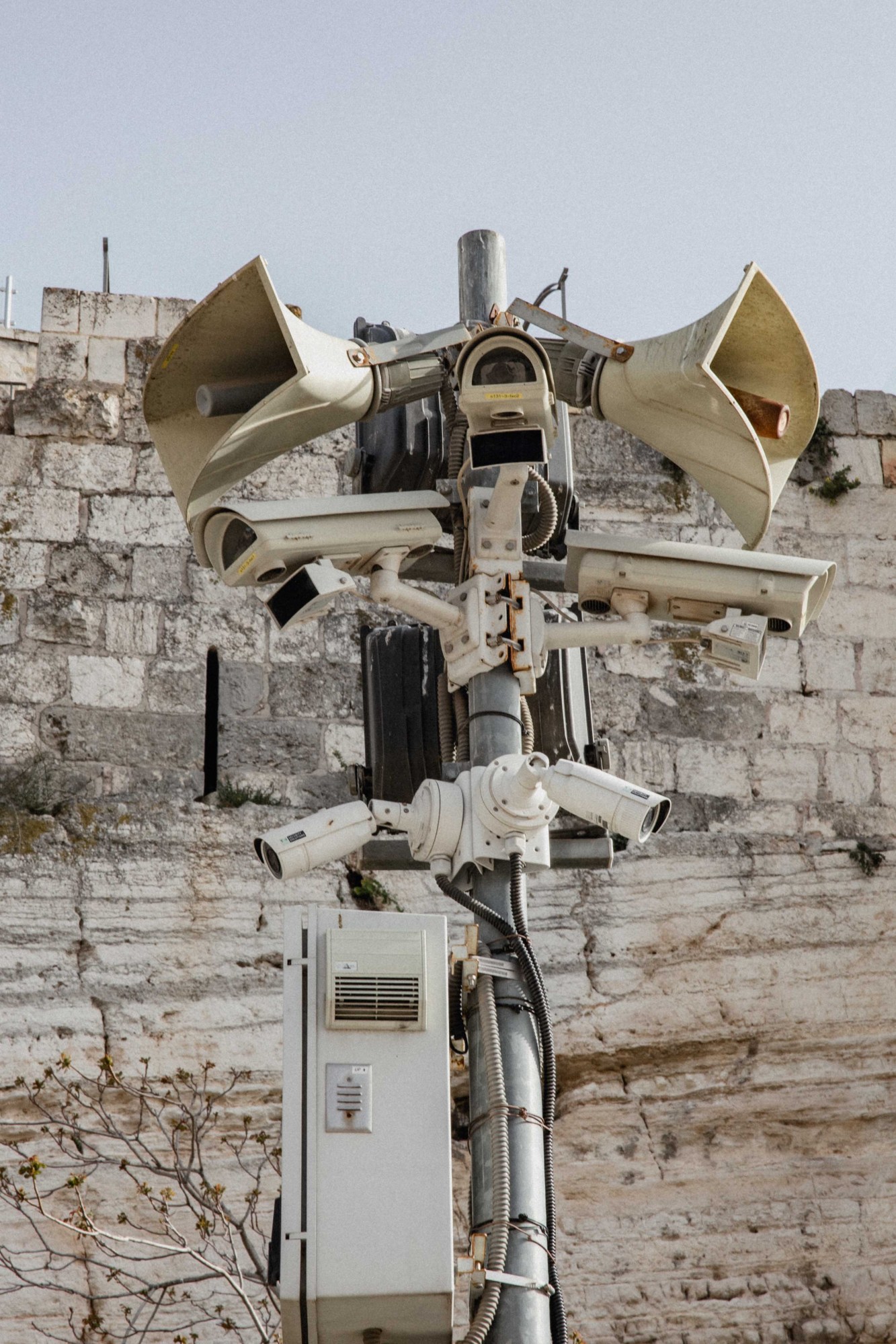
I love this idea that skating is a lens — towards formalism, towards history. It turns the world into something loaded with possibility. How does being bicultural facilitate that sense of possibility, or add a dimensional perspective?
I am Palestinian American. Being raised in Michigan, in white suburbia: it was a complicated place to be in diaspora. But we always had some connection to Palestine, whether it was going back for summers, or family, or the news, or my mum’s kitchen. The conversations in our house were very ‘Palestine,’ but I would hang out with people named Taylor and Brennan. I think having spent years back in Palestine was a really important reflection period of also understanding the lenses that my brain sees the world through, and a lot of where my privileges come in. The thing that frustrated me about being back in Palestine was just seeing the dichotomy of what life can be. That is not to say that the US is a perfect example of a rights-based future, but there’s way more freedoms and ability to be in a just world, whereas in Palestine, it seems like the violence is surrounding you — and in your brain. It’s like the psychological component of mundane violence.
In the book, I have a series of entries called “Mundane Violence,” and it’s about the under-the-radar parts of life and Palestine that really get to me, and I think get to everybody. Skating is a very important tool to undo or unwind those. Violence can be very explicit and in your face, like a checkpoint or a soldier carrying a gun. But violence can also be facial recognition technology, or the inability to see a horizon other than a wall or concrete. That mundane violence is almost where skating is more important, because that’s where the escape lets you live in an imagination. That ability to be in an imagination is also a counter-force against a very systematic reality where it’s hard to imagine joy, or hope, or happiness when you’re living in Palestine as a Palestinian.
Skating is not a “one solution fits all.” But for a very small cohort of Palestinian skaters, it is their world, because it is one of the only times that they’re allowed, or are allowing themselves, to be in this imagination of joy and play and hope and community and all the amazing things that I think young people should be able to enjoy.

Were there any photographers or artists or skaters who were totemic for you in terms of relaying this sense of hope and joy? Or were you carving something out from not having seen those things?
The skaters themselves are also great representations of why I believe what I say. I grew up having a few skate shops within 20 minutes of my house, a skate park, and a very loving and welcoming mother and father who would buy me all of this stuff. And in Palestine, there is no skate shop. It’s fully community-centered. If you break a board, you speak to other skaters, and you see who has an extra board.
There’s a charity organisation called Skate Pal, which is also massively helpful in giving resources and building skate parks. So I think the resilience of the scene itself is not something I baked in: it’s something that I existed with. And to see that happen organically… skateboarding is a liberatory pursuit. There is a struggle for joy and community when the world is trying to eat you alive.
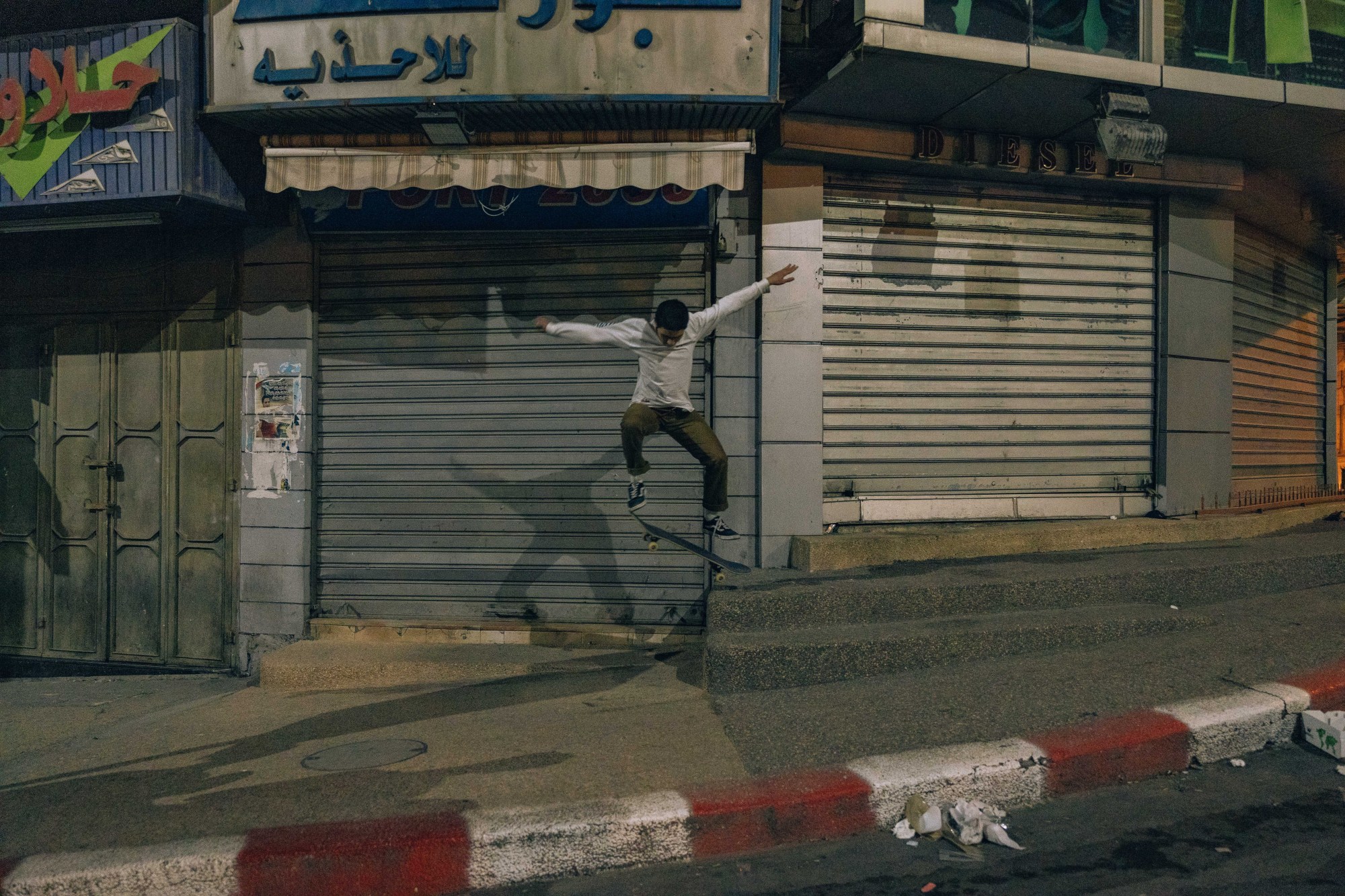
I noticed there was only one girl amongst the photos, so I was wondering: how does gender play into this sense of niche collective?
In the US, skating is still such a male-dominated sport, and culture. There’s a lot of toxic masculinity that’s part and parcel to it. In Palestine, it’s almost like… that part doesn’t exist, because it’s so new and novel that there’s not really like a learned helplessness that this is a sport for dudes. Where the really nasty patriarchy comes in is: I’ve been seeing young girl skaters stop much sooner than young boys because of societal pressure. You shouldn’t do this, you should focus on school, you’ll get hurt. And those power dynamics aren’t the same on a boy. But Zaina, the girl skater, is amazing. Some people just pick skating up for a few weeks and stop. She’s been skating since I think 2017 or 2018.
I’m finding that — now, being 30 — I question how and why I’m still, like, throwing my body off of stairs. But I think philosophically, it’s such an important piece of my life. Even when I got my first skateboard at nine, I was obsessed with it. It was never casual: the second I would get home from school, I would drop my bags and go out into the sidewalk. I found a way to carve out that narrative through skateboarding, by exploring this idea of when I went back home to Palestine. It was through this very radical relationship with skateboarding in Palestine that I sort of found myself. When I went back, I was like the nine-year-old kid picking up his skateboard for the first time, finding where that world landed for me.
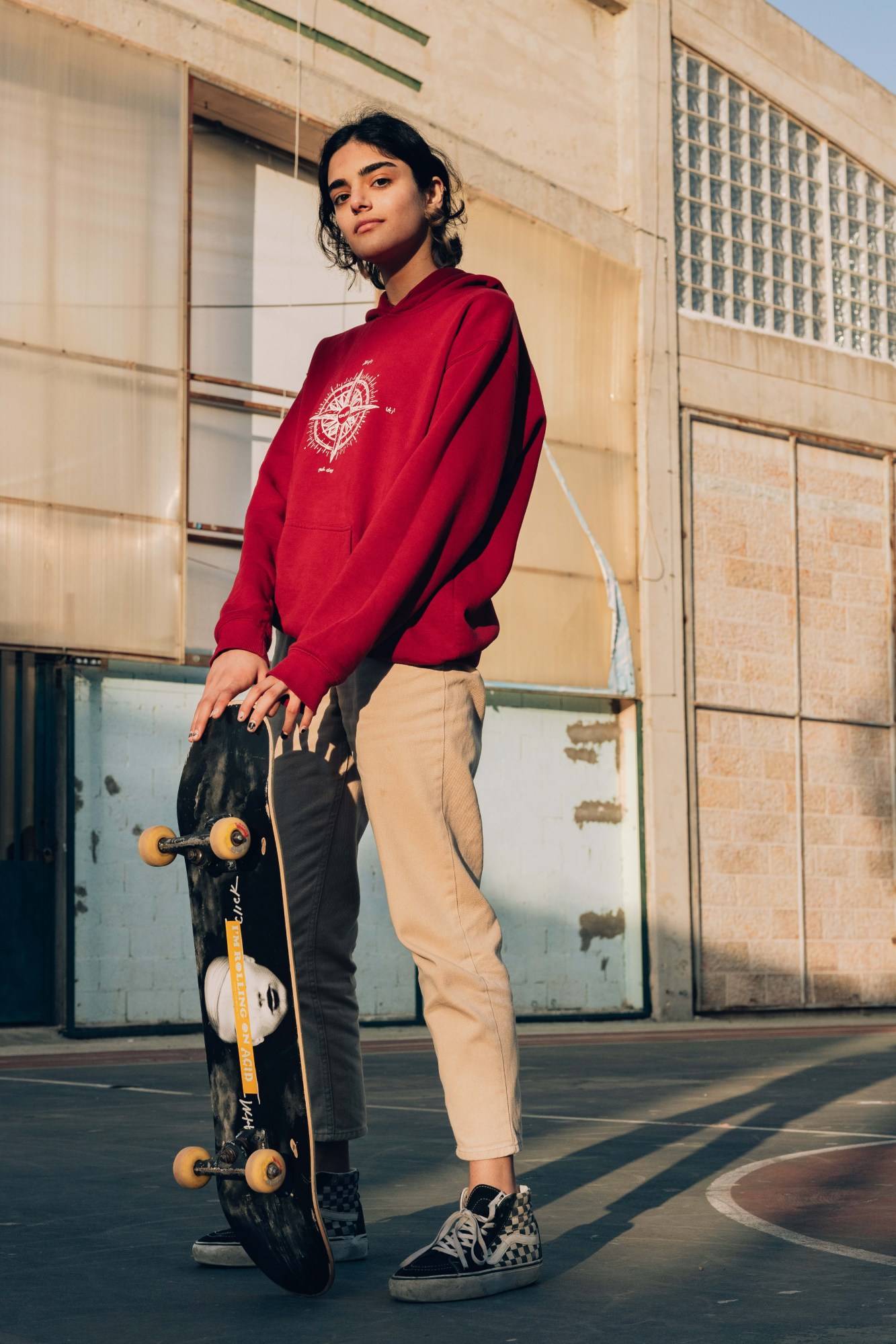
Credits
Images courtesy of the artist
